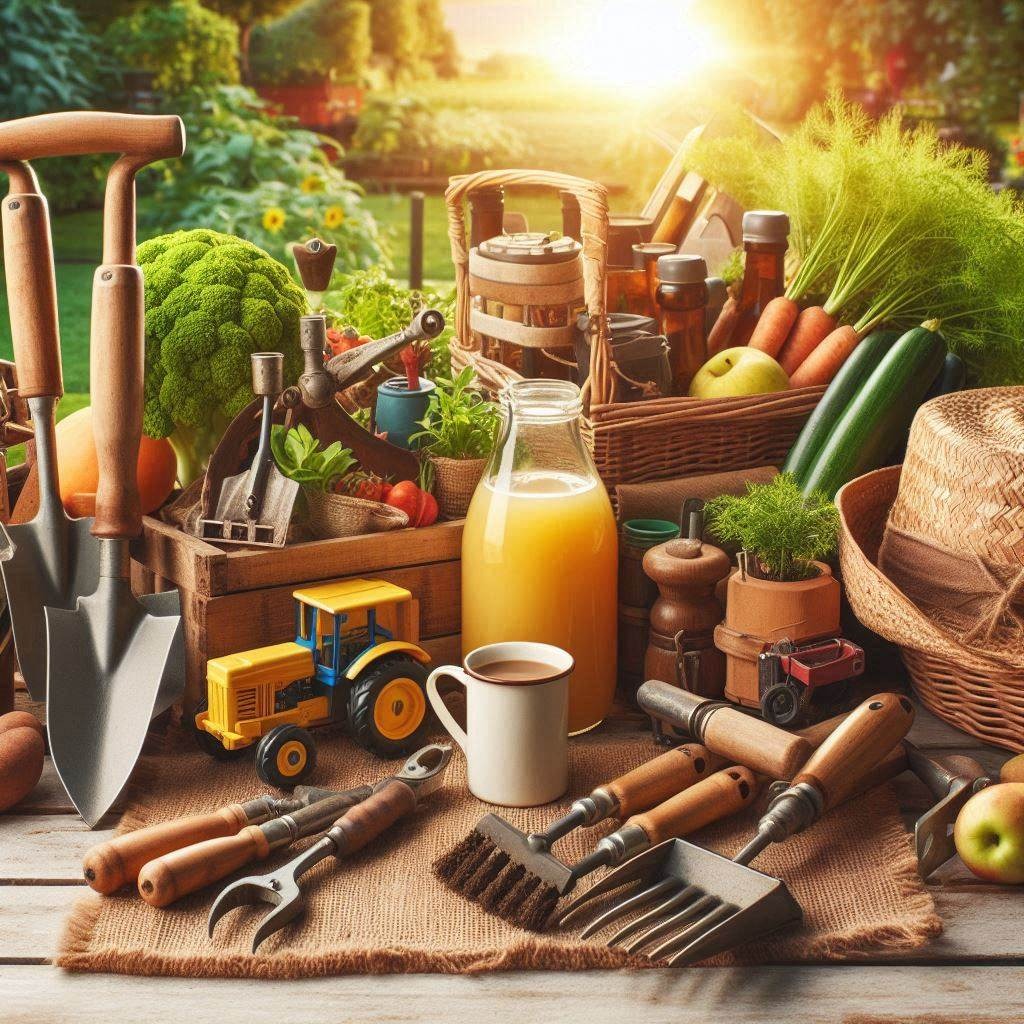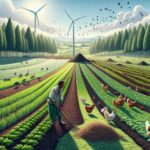A Beginner’s Guide to Farm Equipment: Tools for a Productive Farm
Running a farm, whether large or small, requires the right tools to keep everything moving smoothly. Whether you’re new to farming or an experienced hand looking to update your setup, understanding farm equipment is essential for improving efficiency, saving time, and maintaining a productive operation. In this guide, we’ll walk through some of the key pieces of farm equipment, how they work, and what you should consider when choosing the right tools for your farm.

1. Tractors: The Backbone of Farming
A tractor is perhaps the most essential piece of equipment for any farm. Whether you’re planting crops, towing equipment, or transporting goods around the farm, tractors are versatile workhorses. Modern tractors come in various sizes and with different attachments, allowing you to customize them based on your farm’s needs.
When selecting a tractor, consider:
- The size of your farm
- The types of tasks you’ll need the tractor to perform
- Your budget
Compact tractors work well for small to medium-sized farms, while larger farms may require a more powerful, heavy-duty model.
2. Plows: Preparing the Soil
Plows are crucial for preparing the soil before planting crops. They help break up hard soil, turn over the earth, and bury crop residues, all of which create a healthy environment for new seeds to grow. Traditional moldboard plows are still popular, but there are also more modern options like chisel plows and disc plows, each designed for specific types of soil and farming practices.
Key factors when choosing a plow:
- Soil type: Some plows work better in sandy soils, while others are suited for clay.
- Farming goals: Are you focusing on tillage, crop rotation, or specific crops that need deep tilling?
3. Seeders and Planters: Efficient Crop Planting
Once your soil is prepped, it’s time to plant. Seeders and planters ensure that your crops are planted evenly and at the right depth, giving them the best chance to grow. For smaller farms, a walk-behind seeder may be enough, but for larger areas, tractor-mounted planters save significant time.
Types of seeders include:
- Broadcast seeders, which spread seeds evenly across a field.
- Precision seeders, which place seeds in specific spots at the exact depth and spacing you need.
Choosing the right seeder depends on what crops you’re planting, the size of your operation, and your efficiency goals.
4. Harrows: Fine-Tuning the Soil
After plowing, harrows are used to break down large clods of soil, smoothing out the surface before planting. Harrows also help mix fertilizers into the soil and remove weeds. There are different types of harrows, such as disc harrows and chain harrows, each suited for particular tasks.
When deciding on a harrow, think about:
- Your soil condition: If your soil is dense or full of clods, you’ll need a more robust harrow.
- Your crops: Some crops need finer soil preparation than others.
5. Harvesters: Gathering the Fruits of Your Labor
Harvesting is one of the most labor-intensive processes on a farm, and having the right equipment makes a world of difference. Combine harvesters, for instance, are incredibly efficient for large-scale farms, as they perform three functions at once: reaping, threshing, and winnowing. For smaller farms, handheld or tow-behind harvesters can still drastically cut down on manual labor.
When choosing a harvester, you’ll want to consider:
- The type of crops you grow
- The size of your fields
- Your available workforce and labor needs
6. Irrigation Systems: Ensuring Proper Watering
Efficient water management is critical for healthy crops. Irrigation systems allow you to control how much water your crops receive, preventing over- or under-watering. From simple hose systems to advanced drip irrigation and pivot sprinklers, there’s a solution for every farm size and crop type.
Considerations for choosing an irrigation system:
- Water source availability: Ensure your system is compatible with the source you’ll be using.
- Crop water needs: Different crops require different levels of moisture.
- Farm size: Larger farms may benefit from automated systems to save labor and ensure consistency.
7. Baling Equipment: Managing Hay and Straw
If your farm includes livestock or you grow hay or straw, baling equipment is essential for efficiently bundling your materials. There are two main types of balers: round balers and square balers. Round balers create large, cylindrical bales, while square balers produce more manageable rectangular bales. The type you choose depends on your storage setup, the ease of transport, and how you plan to use the hay or straw.
Final Thoughts: Choosing the Right Equipment for Your Farm
When it comes to farm equipment, there’s no one-size-fits-all solution. The right tools for your farm depend on your specific needs, goals, and the type of farming you do. Whether you’re focused on crop production, livestock, or a combination of both, investing in the right equipment can save you time, reduce manual labor, and increase your farm’s efficiency.
As you consider upgrading or purchasing new equipment, it’s important to do thorough research, consult with other farmers, and test out equipment when possible. Taking the time to choose wisely will pay off in the long run, helping your farm stay productive for years to come.


